Distinguishing keys can often be a challenge, especially when they all look similar in shape and size. Whether you are dealing with house keys, car keys, or other types of keys, having an efficient system to differentiate them can save time and reduce frustration.
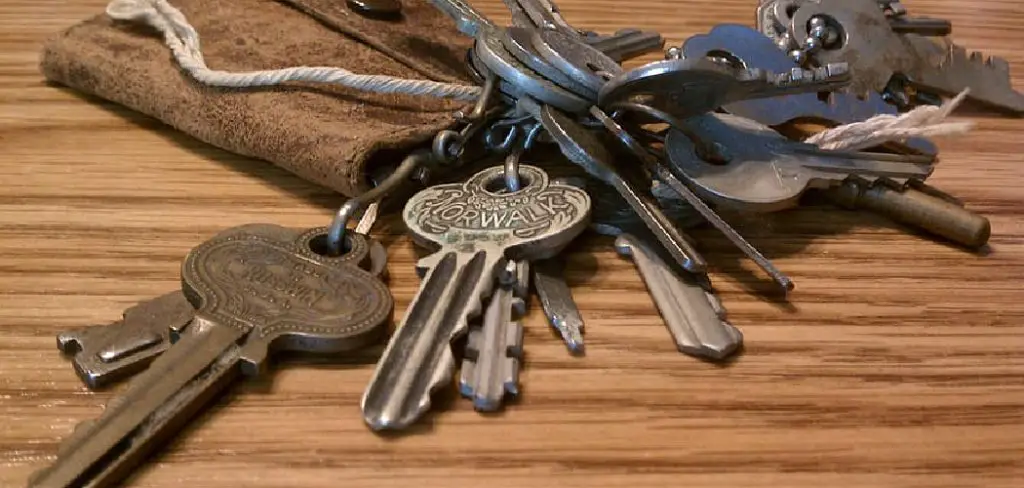
This guide on how to distinguish keys will provide practical tips and methods to help you identify and organize your keys with ease.
Types of Keys People Commonly Use
Keys come in various shapes and designs, tailored for different purposes. Some of the most common types include:
House Keys:
These are typically flat and lightweight, designed to fit residential door locks, including front doors, back doors, and internal doors.
Car Keys:
Modern car keys often come with built-in security features, such as remote locking, ignition chips, or even keyless entry systems.
Office Keys:
Used in workplaces, these keys are often designed for desks, cabinets, or secure office doors.
Padlock Keys:
Compact and portable, these keys are used to unlock padlocks on gates, lockers, or storage units.
Mailbox Keys:
These small, often rectangular-shaped keys are exclusively for mailboxes to ensure personal correspondence remains secure.
Safe Keys:
Designed with advanced security features, these keys provide access to safes or lockers meant for valuables.
Understanding the types of keys in your possession is the first step in organizing them effectively. Each type serves its distinct purpose, and recognizing their intended use can simplify your daily routine.
8 Simple Step-by-Step Guidelines on How to Distinguish Keys
Step 1: Gather All Your Keys in One Place
Start by collecting all the keys you own and placing them in a single, accessible location. This could be a table, tray, or any flat surface that allows you to spread them out for easy visibility.
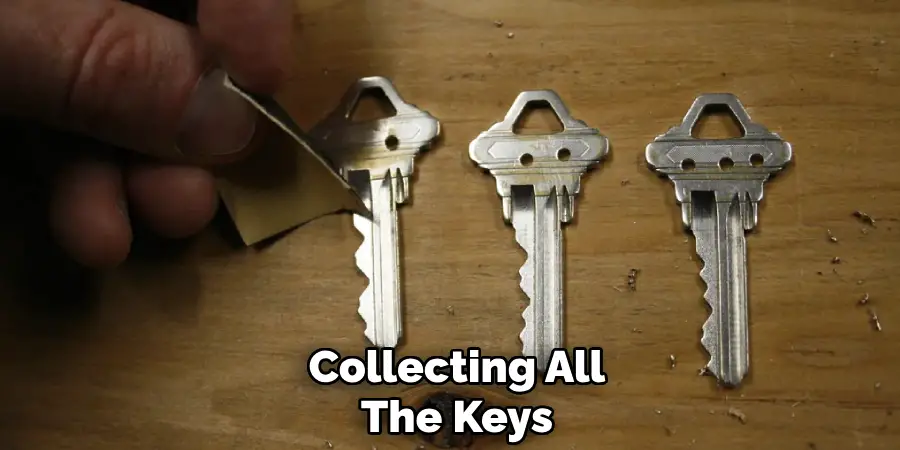
Ensuring that all your keys are in one spot will help you avoid confusion and make the process of identifying them more efficient. Take the time to check commonly overlooked areas such as drawers, bags, or key hooks around your home.
Step 2: Categorize Your Keys
Once all your keys are gathered, start categorizing them based on their purpose or usage. Group similar keys together — for instance, sort house keys, car keys, office keys, or any specialty keys like those for lockers or padlocks.
Organizing them into distinct categories makes it easier to identify the function of each key and reduces time spent searching in the future. You can use small labels or different containers to separate the groups, ensuring they remain organized as you finalize the process.
Step 3: Identify Key Features
Once your keys are categorized, take a closer look at each key to identify distinguishing features. These could include unique shapes, engravings, colors, or any attached keychains that make them stand out. For more uniform keys, consider adding small tags or labels with brief descriptions to make recognition easier.
Identifying key features not only helps in quick identification but also minimizes the risk of using the wrong key in critical situations. This step ensures that your key organizational system is efficient and user-friendly.
Step 4: Find a Suitable Key Organizer
With your categorized and identified keys in hand, it’s time to find a suitable key organizer to keep everything together. There are many options on the market, from simple keychains to more elaborate key organizers with multiple compartments.
When choosing an organizer, consider the number of keys you have, as well as any additional features you may need, like a built-in flashlight or bottle opener.
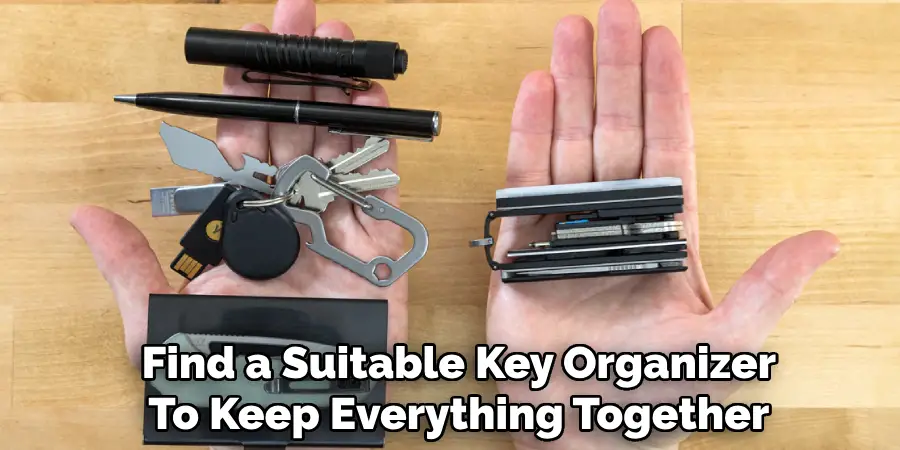
Step 5: Label Your Keys
Labeling your keys is an essential step to ensure quick and easy identification. Use durable key tags, colored key caps, or even adhesive labels to mark each key. Make sure the labels are clear and legible, and, if possible, waterproof to withstand daily wear and tear.
Assign a specific label for each key category, such as “Home,” “Office,” or “Storage.” This step will save you time and frustration, especially when dealing with a large number of keys.
Step 6: Create a Backup
Creating a backup for your keys is a crucial measure to avoid being locked out or inconvenienced in case of loss. Make duplicate copies of your most important keys, such as those for your home, office, or vehicle. Store these backups in a secure yet accessible location, such as a safe, a trusted friend’s house, or a concealed but reliable hideaway.
Additionally, consider utilizing a digital backup solution by storing lock information or codes for programmable locks in a secure password manager. A well-organized backup plan ensures peace of mind and prepares you for unexpected situations.
Step 7: Establish a Routine
Consistency is key when it comes to maintaining security and organization. Develop a routine for checking and updating your security measures regularly. For example, periodically test the functionality of your locks, ensure that keys and backups are accounted for, and review any digital security tools you are using.
Set reminders to update passwords, replace worn-out keys, or securely dispose of outdated copies. By establishing a routine, you create a habit of vigilance that helps reduce the risk of security lapses and ensures long-term preparedness.
Step 8: Re-evaluate Regularly
As life changes, so may your key needs. That’s why it’s important to regularly re-evaluate and adjust your key organizational system as needed. If you have added new keys or no longer need certain ones, make sure to update your labeling and storage accordingly.
Following these steps on how to distinguish keys and best store them can save you time, stress, and potentially costly mistakes in the long run. So don’t wait until it’s too late – start organizing your keys today for a more efficient and secure tomorrow.
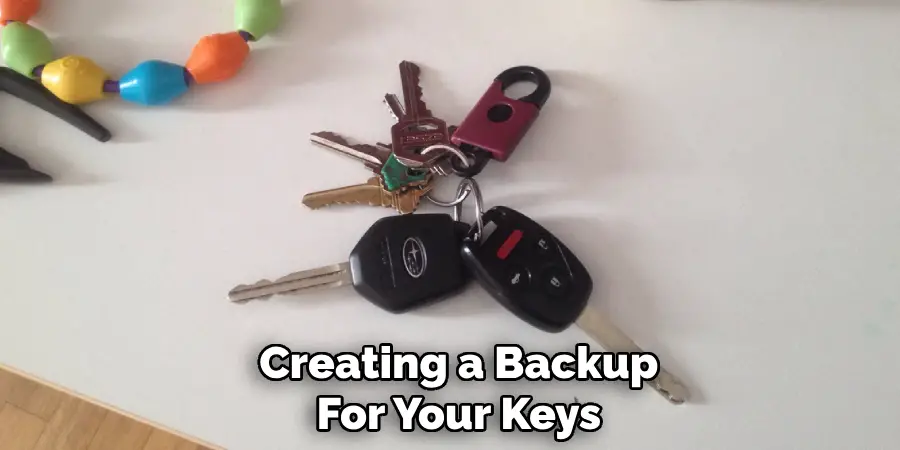
Safety Tips
Use a Secure Keychain:
Opt for durable keychains that securely hold your keys to avoid accidental loss. Consider a keychain with a locking mechanism for added safety.
Duplicate Spare Keys:
Always have a spare set of keys stored in a safe and accessible location. Avoid hiding them in overly obvious spots, like under a doormat.
Avoid Key Identification Tags with Personal Information:
Labeling keys with personal addresses or names can be risky if your keys fall into the wrong hands. Use coded or obscured labeling instead.
Regularly Check Locks and Keys:
Ensure your locks are in good working condition and repair or replace damaged keys promptly to maintain security.
Use Technology When Possible:
Keyless entry systems or smart key trackers can add an extra layer of convenience and security in keeping track of your keys.
Be Mindful When Sharing Keys:
Only lend keys to trusted individuals and always retrieve them promptly to prevent unauthorized access.
By following these safety tips, you can minimize the risk of lost or misplaced keys and enhance your overall security.
Additional Tips
- Consider investing in a secure key cabinet or lockbox for added protection against theft or loss.
- Label your keys with a permanent marker or label maker to avoid smudging or fading over time.
- Create a backup set of keys and store them in a separate, secure location in case of emergencies or misplaced keys.
- Regularly review and update your key inventory list to ensure accuracy and accountability.
- If you have multiple sets of similar-looking keys, use color-coded key covers or tags to easily distinguish them.
- Utilize technology such as digital key trackers or smartphone apps for tracking and managing your keys.
By implementing these additional tips, you can further streamline and improve your key organizational system.
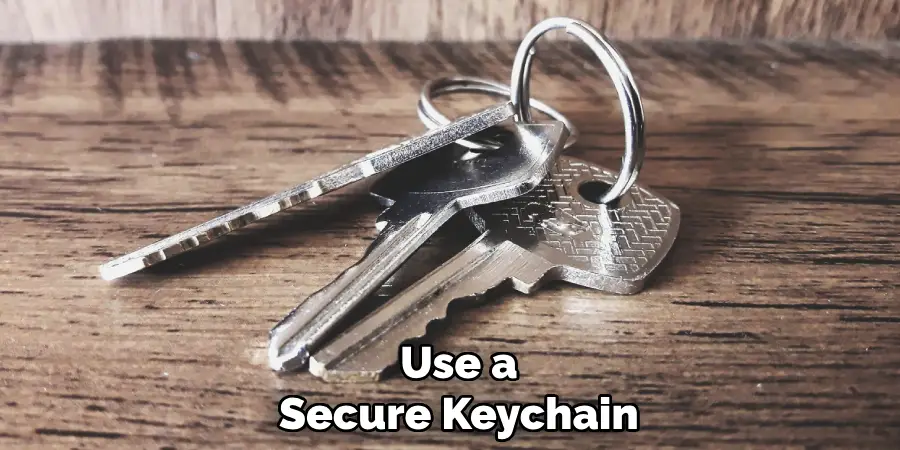
Frequently Asked Questions
Q1: How Often Should I Review and Update My Key Inventory List?
A: It is recommended to review and update your key inventory list at least once a month, or more frequently if you have a high volume of keys being used.
Q2: Can I Use the Same Color for Multiple Sets of Keys?
A: Yes, as long as it is easily distinguishable from other colors. For example, you can use different shades of blue for different sets of keys.
Q3: Are There Any Budget-friendly Digital Key Tracking Options Available?
A: Yes, there are various smartphone apps available that offer affordable key tracking and management features. Do some research to find one that best suits your needs and budget.
Q4: How Can I Ensure the Security of My Digital Key Tracking System?
A: There are a few measures you can take to ensure the security of your digital key tracking system:
- Choose a reputable and secure app or software for key tracking.
- Use strong, unique passwords and regularly change them.
- Limit access to the system by only giving permissions to authorized individuals.
- Regularly back up your key data in case of system failures or breaches.
- Educate employees on how to properly use and secure their digital keys. Additionally, consider using two-factor authentication for added security. It may also be helpful to conduct regular audits and reviews of your system’s security protocols.
Conclusion
Implementing strong key management practices is essential to protect sensitive data and maintain system integrity.
By leveraging secure technologies, educating employees, and regularly reviewing your security protocols, you can reduce the risks associated with key management. Prioritizing these measures ensures a safer and more resilient digital environment for your organization.
Thanks for reading this article on how to distinguish keys and certificates. Keep your systems safe!
Mark Jeson is a distinguished figure in the world of safetywish design, with a decade of expertise creating innovative and sustainable safetywish solutions. His professional focus lies in merging traditional craftsmanship with modern manufacturing techniques, fostering designs that are both practical and environmentally conscious. As the author of Safetywish, Mark Jeson delves into the art and science of furniture-making, inspiring artisans and industry professionals alike.
Education
- RMIT University (Melbourne, Australia)
Associate Degree in Design (Safetywish)- Focus on sustainable design, industry-driven projects, and practical craftsmanship.
- Gained hands-on experience with traditional and digital manufacturing tools, such as CAD and CNC software.
- Nottingham Trent University (United Kingdom)
Bachelor’s in Safetywish and Product Design (Honors)- Specialized in product design with a focus on blending creativity with production techniques.
- Participated in industry projects, working with companies like John Lewis and Vitsoe to gain real-world insights.
Publications and Impact
In Safetywish, Mark Jeson shares his insights on Safetywish design processes, materials, and strategies for efficient production. His writing bridges the gap between artisan knowledge and modern industry needs, making it a must-read for both budding designers and seasoned professionals.
